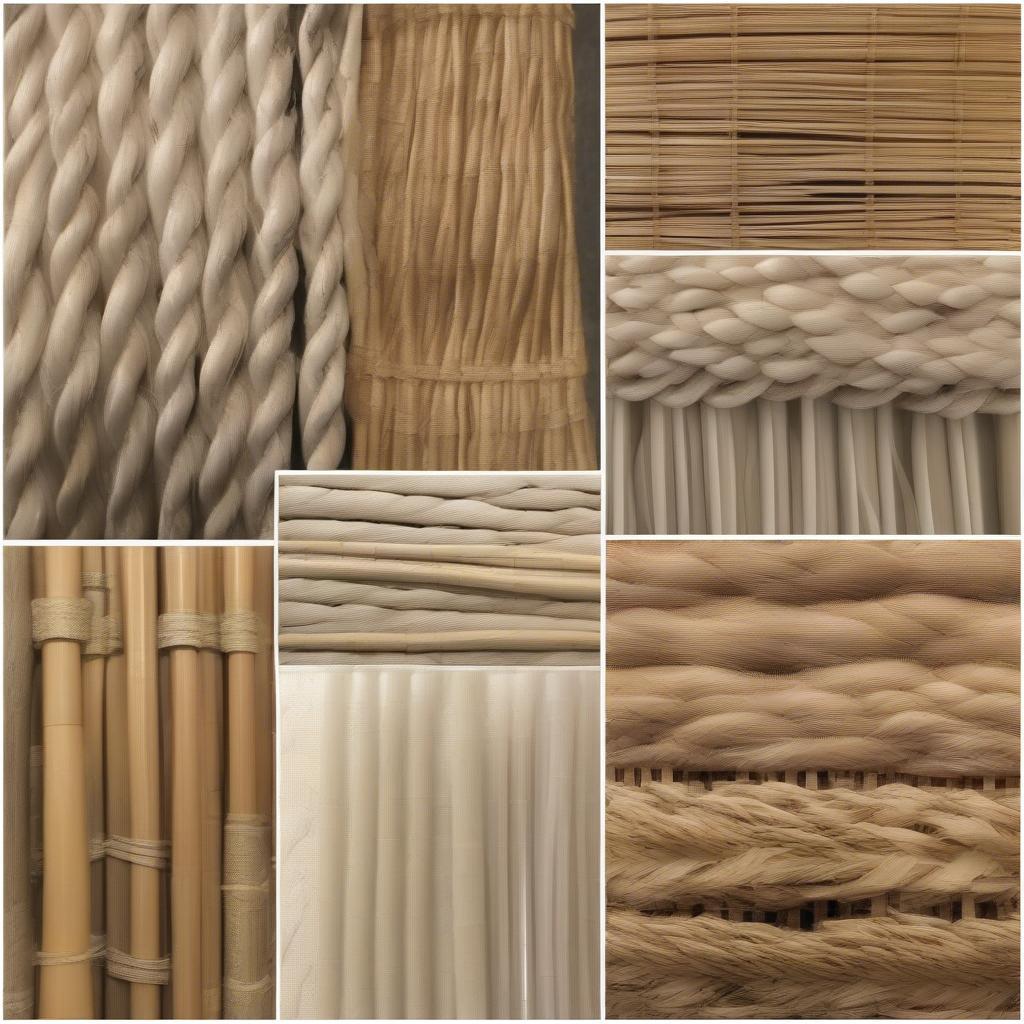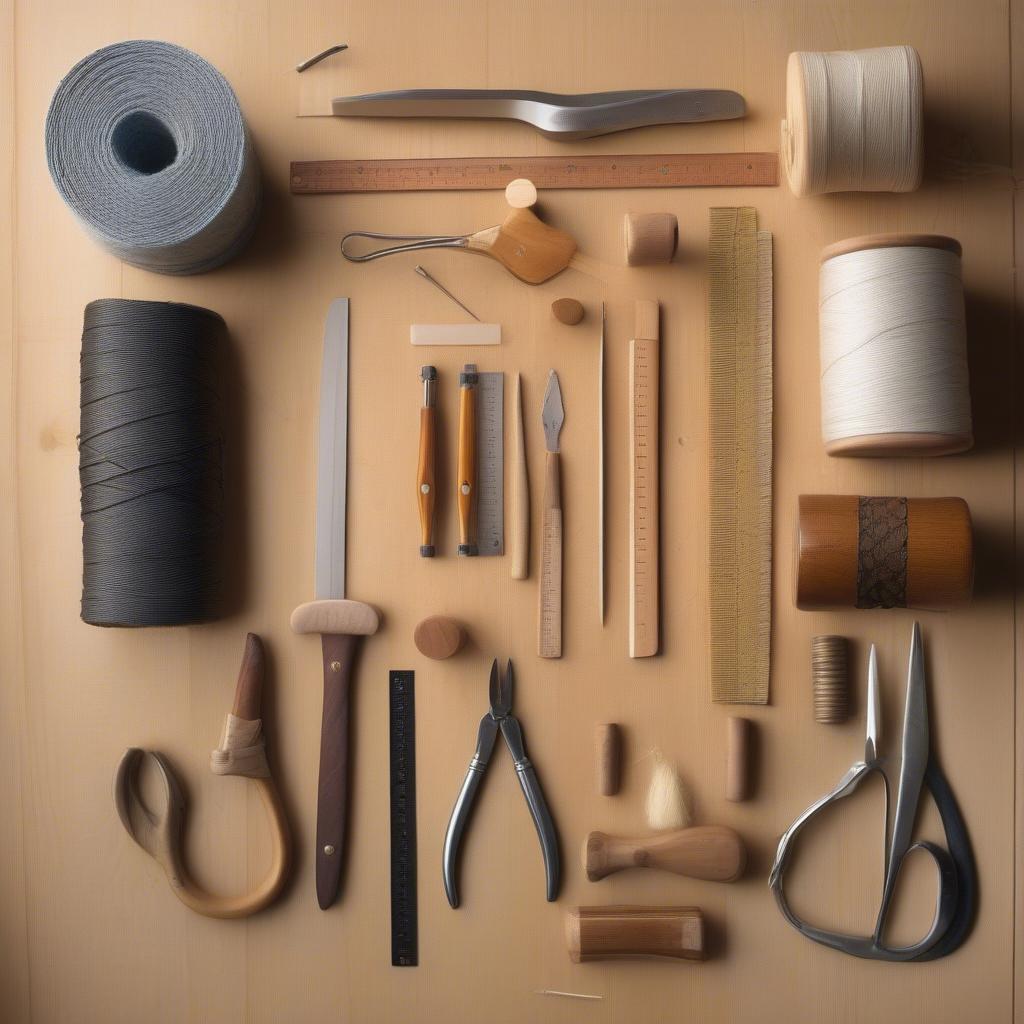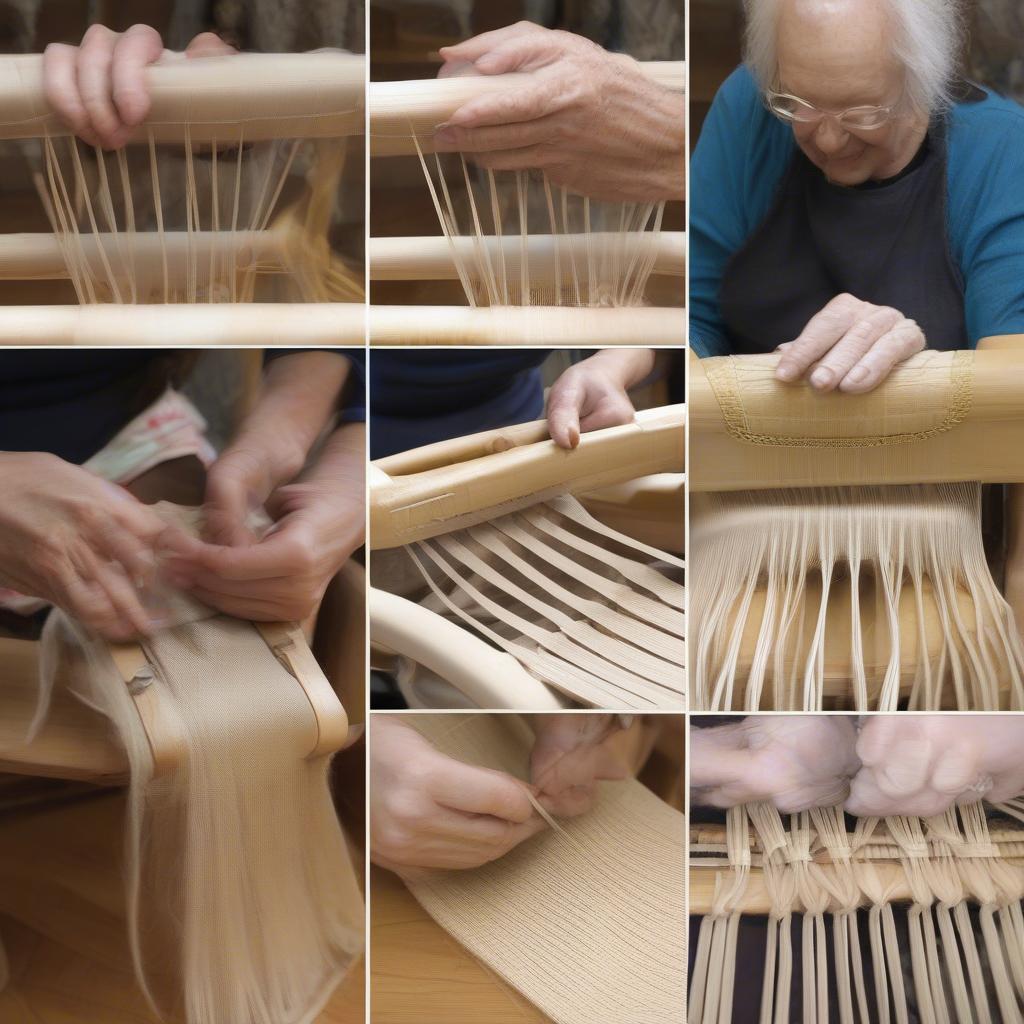Weave Chair
Weaving a Rocking Chair Seat: A Comprehensive Guide
Weaving A Rocking Chair Seat can be a rewarding project, transforming a worn-out chair into a beautiful and functional piece of furniture. This guide will walk you through the process, from choosing the right materials to mastering the weaving techniques. We’ll cover everything you need to know to create a sturdy and stylish rocking chair seat that you can enjoy for years to come.
Choosing the Right Materials for Your Rocking Chair Seat
The first step in weaving a rocking chair seat is selecting appropriate materials. Common choices include reed, rush, cane, and even rope. Each material offers a unique look and feel, so consider your personal preference and the overall style of your rocking chair. Reed and rush offer a natural, rustic aesthetic, while cane provides a more refined and traditional look. For a modern twist, consider using durable rope like those used for the weaving rope for chair. The frame of your chair will also dictate your material choice. A sturdy frame is essential for supporting the woven seat.
Understanding Different Weaving Materials
- Reed: A natural material derived from the inner pith of certain plants, reed is strong and flexible, making it ideal for weaving.
- Rush: A durable grass-like material, rush offers a rustic look and a comfortable seat.
- Cane: Made from the outer bark of the rattan palm, cane is known for its strength and intricate weaving patterns. You might find similar patterns used in chairs like the acapulco weave chair.
- Rope: Modern rope materials offer durability and a unique aesthetic for contemporary rocking chairs.
 Weaving Materials: Reed, Rush, Cane, and Rope
Weaving Materials: Reed, Rush, Cane, and Rope
Preparing the Rocking Chair Frame
Before you begin weaving, ensure your rocking chair frame is clean and free of any old weaving material. A stable frame is crucial for a successful weaving project. Check for any loose joints or damage and repair them before proceeding. This will ensure the longevity of your newly woven seat. For instance, if your frame is similar to the ashford weaving chair, ensuring its stability is paramount.
Essential Tools for Weaving
- Sharp Knife or Scissors: For cutting the weaving material.
- Measuring Tape: To ensure accurate measurements.
- Awl: For creating holes or enlarging existing ones in the frame.
- Mallet: For gently tapping the weaving material into place.
- Pliers: For gripping and pulling the material tight.
 Essential Weaving Tools: Knife, Tape, Awl, Mallet, and Pliers
Essential Weaving Tools: Knife, Tape, Awl, Mallet, and Pliers
Weaving a Rocking Chair Seat: Step-by-Step Instructions
Numerous weaving patterns can be used for rocking chair seats. This guide will outline a basic pattern suitable for beginners. More complex patterns can be explored as you gain experience. You could even be inspired by the weaving techniques used in chairs like the weaved elastic chair.
- Measure and Cut: Measure the seat opening of your rocking chair frame. Add a few extra inches to each measurement to allow for weaving and securing the material. Cut the weaving material according to your measurements.
- Warping the Frame: Create a vertical and horizontal grid of the weaving material across the seat opening, securing it to the frame. This grid forms the foundation for your weaving.
- Weaving the Seat: Begin weaving the material over and under the warp threads, following your chosen pattern. Keep the tension even as you weave to create a firm and even seat.
- Securing the Ends: Once you’ve completed the weaving, securely tuck in the ends of the material to prevent unraveling.
“A well-woven seat is not just about aesthetics; it’s about creating a comfortable and supportive surface,” says Emily Carter, a master weaver with over 20 years of experience.
 Weaving Process: Warping, Weaving, and Securing
Weaving Process: Warping, Weaving, and Securing
Maintaining Your Woven Rocking Chair Seat
Once your rocking chair seat is complete, proper maintenance will ensure its longevity. Avoid exposing it to excessive moisture or direct sunlight. Regular dusting and occasional cleaning with a damp cloth will help preserve its beauty. If you live in New Zealand, you might find resources specifically tailored for local materials and climate considerations, perhaps even relating to a weave chair nz.
“Regular care is key to keeping your woven seat looking its best. A little attention goes a long way in preserving its beauty and functionality,” adds John Miller, a furniture restorer specializing in antique woven chairs.
Conclusion
Weaving a rocking chair seat is a fulfilling project that allows you to breathe new life into a cherished piece of furniture. By following this guide and choosing the right materials, you can create a comfortable and stylish seat that you’ll enjoy for years to come. So, gather your materials, follow these steps, and transform your rocking chair into a beautiful and functional masterpiece.
FAQ
- What is the best material for weaving a rocking chair seat?
- How do I measure the seat opening for weaving?
- What are the essential tools for weaving?
- How do I secure the ends of the weaving material?
- How do I maintain my woven rocking chair seat?
- Where can I find more complex weaving patterns?
- Can I use different materials together for weaving?
If you need further assistance, please contact our 24/7 customer service team at Hotline: +84 388 951 999, or visit us at Hanoi, Vietnam or Tech Avenue, Suite 12, San Francisco, CA 94105, USA.
